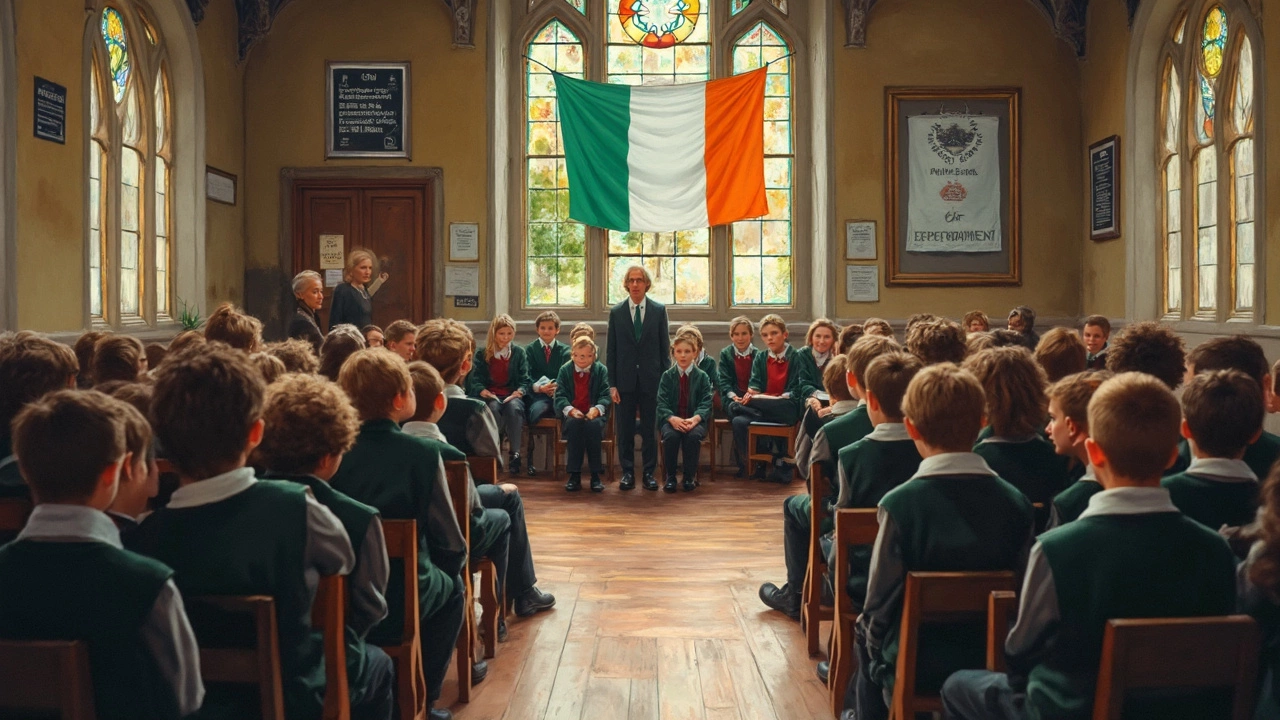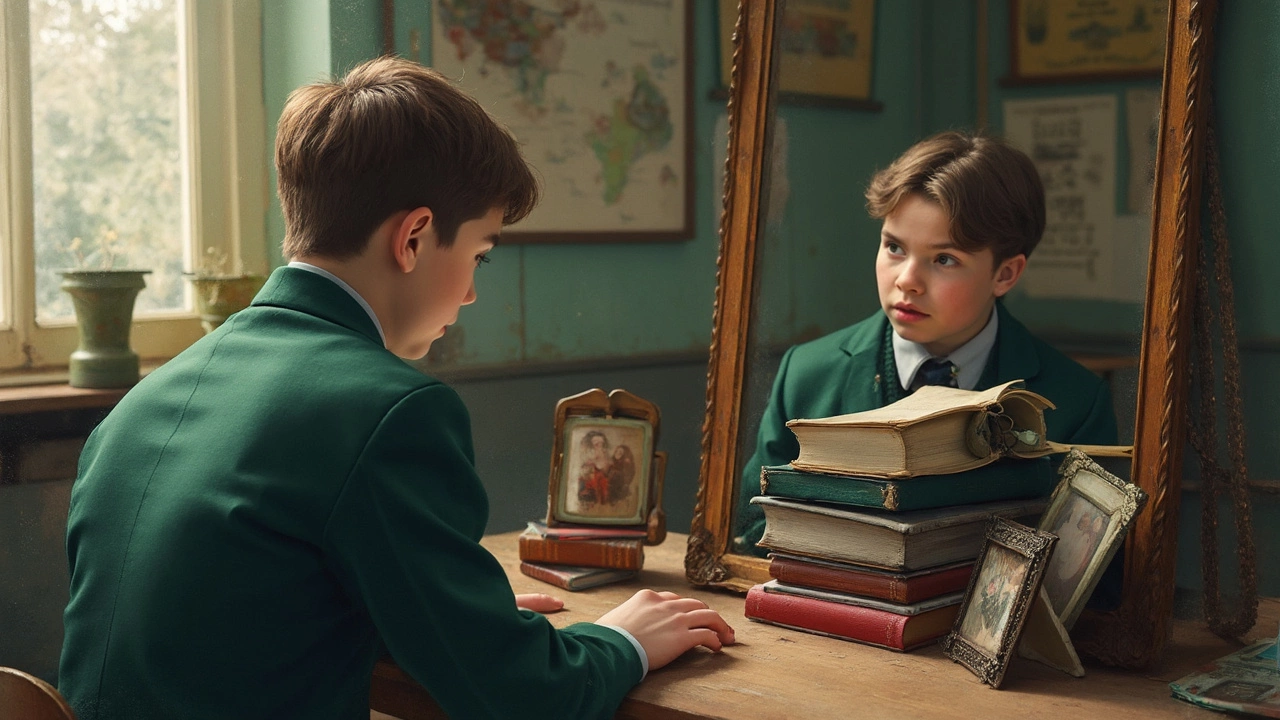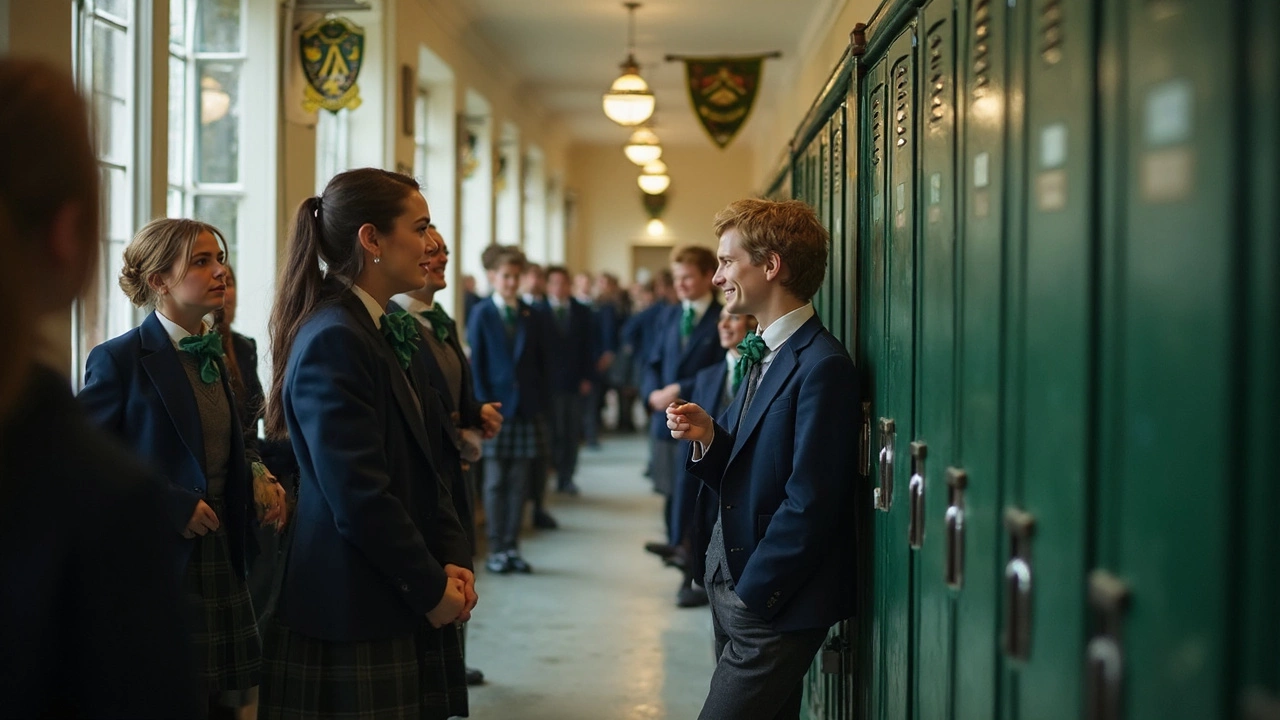In Ireland, school uniforms are stitched into the fabric of everyday life—an image as Irish as hurling or Tayto crisps. Stand outside any school gate from Cork to Donegal, and you’ll find waves of navy and grey moving in, blazers buttoned and crested jumpers worn whether rain lashes or sun finally makes an appearance. Ask around, and you’ll find a country almost split down the middle: some see uniforms as a key to order and discipline, while others grumble about conformity and cost. But do uniforms actually shape students’ behaviour, or have we just grown used to the sight?
Irish Schools and the Uniform Code: Tradition, Policy, and Culture
There’s no law forcing every school in Ireland to require uniforms. Instead, school boards and principals set their own dress codes—with Department of Education guidance mattering, but local communities often steering the conversation. In many Dublin and Galway secondary schools, the uniform is more than a dress code: it’s a marker of school pride and, in some circles, social standing. The Christian Brothers, Presentation Sisters, and other religious educators baked uniform policies right into their charters when they built schools generations ago. In rural counties, crested jumpers and plaid skirts are common, while city schools sometimes loosen up with trousers and polo shirts.
Despite this patchwork, a 2020 Ipsos MRBI survey for The Irish Times reported nearly 90% of Irish schools required some form of uniform. Cost has been an issue: Barnardos Ireland released annual back-to-school surveys showing parents regularly spending over €150 per child on uniforms alone, with concerns about access and equality. Yet, the visible sameness a uniform produces is seen as one tool for easing the class divides that can quietly mark Irish life. Wearing the same outfit, students from all sorts of backgrounds blend in—at least at first sight.
Beyond looks, Irish schools like Coláiste Iognáid (The Jes) in Galway, or St. Mary’s in Limerick, point to uniforms when discussing school ethos, respect, and safety. The belief is that when everyone dresses alike, rowdiness drops, distractions lessen, and peer pressure takes a different—if not smaller—shape. Still, even teachers admit that badges and strict ties don’t erase personality: there’s always a student with rolled sleeves, scuffed shoes, or strategic alterations bringing quiet rebellion to the corridors.

Do Uniforms Influence Behaviour? Facts, Feelings, and the Irish Experience
The big question is simple—do school uniforms actually lead to better behaviour among Irish students, or is it a case of tradition winning out over truth? Look at the numbers, and the answer isn’t so clear-cut. Once you strip away the misty-eyed memories and heated debates, what’s left on the table?
Trinity College Dublin published a study in 2023 that tracked disciplinary incidents across 100 Irish second-level schools. Researchers found minor dips in visible trouble—such as cases of classroom disruption or fighting—immediately after schools introduced stricter uniform policies. That looked promising, but the impact faded after about a term. More telling: patterns depended more on how teachers interacted with students and whether the school had other positive behaviour supports—restorative practice, student councils, or clear expectations—than simply what the students wore.
Teachers in counties Meath and Offaly interviewed for TeachNet Ireland said uniforms can reduce obvious displays of status or bullying based on fashion, but not bullying itself. The tone in interviews? Uniforms make things smoother in the morning, less hassle about who’s wearing what, but don’t transform the mood on their own. What actually works, say principals in Sligo, is a whole-school approach where students feel seen, heard, and respected—and the uniform is just one cog in that machine.
Ahead of the Junior Cert each June, there are endless debates in parent WhatsApp groups on whether relaxing uniform rules during exams helps or harms focus. Irish secondary students themselves are mixed: some like the ‘uniform saves time in the morning’ routine, others say it adds pressure—especially when strict rules demand expensive branded blazers or force girls into skirts during storms. There’s even a practical angle unique to Irish weather: some schools now allow tracksuits or school-branded hoodies for PE or in freezing months, after student councils pushed back on thin cardigans and inadequate rainproof options.
Let’s put some numbers to the controversy with Irish Department of Education data and insight from the Irish Second-Level Students’ Union (ISSU):
| School Type | Uniform Policy | Discipline Incidents (Avg per year) |
|---|---|---|
| Strict Uniform (Full dress code, blazers, ties) | Enforced, regular checks | 78 |
| Relaxed Uniform (Polo, jumper, no tie) | Flexible, student input | 82 |
| No Uniform | Dress code only | 90 |
So, there’s a gap, but it’s not a landslide. Strict uniforms may mean a few fewer disciplinary slip-ups, but Irish guidance counsellors and youth workers point out that engagement, teaching style, and positive rapport tend to matter much more.

Tips for Irish Parents, Educators, and Students: Making Uniforms Work for Everyone
Given all the noise, how can Irish families and schools get the best from their uniform policies—especially in a landscape where cost of living, inclusivity, and student voice matter more every year?
- Shop smart and local: Skip expensive school-branded shops if you can. SuperValu, Dunnes Stores, and Penneys all now carry generic uniform trousers, jumpers, and polo tops that fit most Irish dress codes, for less. Check with your school's parents’ association for swap shops or second-hand sales—you’d be amazed how many barely-worn jumpers are out there.
- Push for gender and weather flexibility: It rains sideways in Mayo and Kerry, and the wind on Dublin’s quay never seems to let up. Student groups like ISSU have campaigned for trousers or shorts as an option, and proper layering for warmth. If your school’s policy feels out of date, raise it with the board or student council. Irish tradition evolves—see schools introducing PE tracksuits or branded rain jackets as part of regular wear.
- Focus on the why, not just the what: Uniform or not, the key is how schools foster respect, safety, and belonging. If a uniform is used to single out students or enforce discipline without listening, it can backfire. The best Irish schools wrap their policies into wider positive behaviour programmes—assemblies, Restorative Practice circles, chances for students to give feedback, and clear, fair expectations across the board.
- Be ready for exam-time tweaks: Some schools quietly loosen uniform policies before mocks or the real Leaving Cert, allowing jumpers from home or relaxing tie requirements to reduce exam stress. Check in advance and don’t get caught out on a technicality when you’ve enough to worry about!
- Personalise where you can: Even with uniform, Irish students find harmless ways to express themselves—bobbins in county colours, badges, or funky socks. Teachers tell me these touches give kids ownership without undermining the unity uniforms bring.
For Irish readers thinking about schools—whether choosing for your own child, working as a teacher, or remembering your gritty grey blazer days in Louth—the real story is less about clothes and more about community. Uniforms might set a tone, but they don’t write the script: respect and understanding matter just as much, if not more. And if you’re still not sure where you stand, maybe ask the students. They’re the ones wearing their school pride—or rebellion—every single day, rain or shine.
